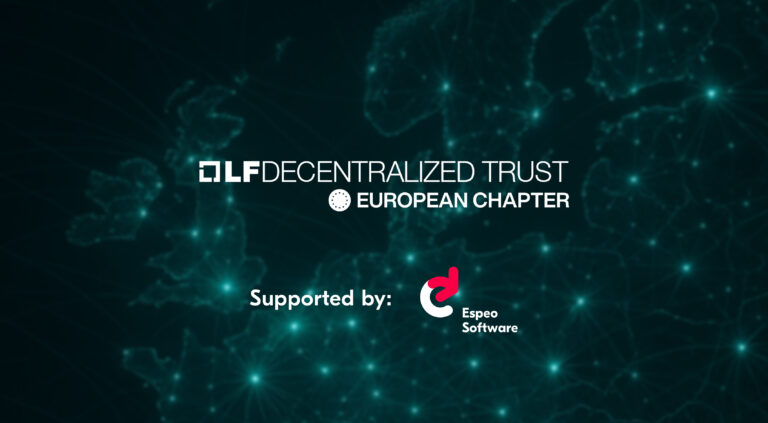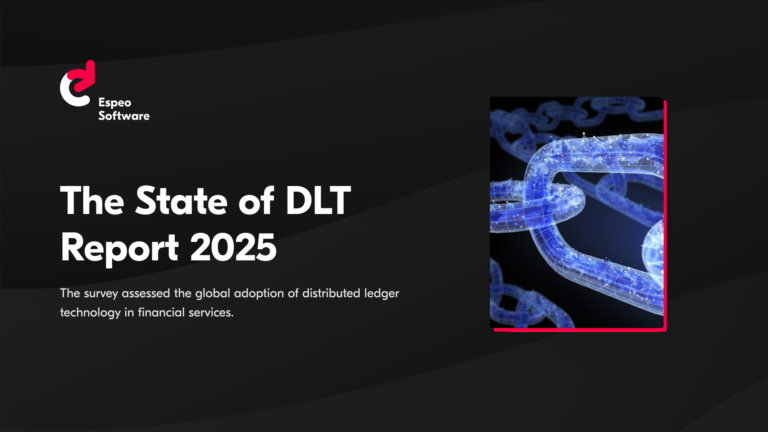In the modern-day digital landscape, consortia and corporate platforms face numerous challenges. These include managing complexity, enhancing collaboration, and improving transparency. This article focuses on addressing them using distributed ledger technology (DLT). Power relations, coopetition within consortia, data security, and privacy in decentralized architectures will be the topic of examination.
How to leverage distributed ledger technology in corporate platforms and consortia
Table of contents:
- Modern-day application of blockchain
- How blockchain can address challenges faced by consortia
- Interactions in corporate platforms – a four-phase trajectory
- Conditions for a Successful distributed ledger technology Project
- Things can go wrong with blockchain
- Our distributed ledger technology business case: HLB Global
- About this article
- About Agnieszka Hołownia-Niedzielska
Modern-day application of blockchain
Distributed Ledger Technology has wide uses. Sectors like settlements and supply chain management continue to leverage it. Logistics use blockchain to track production and delivery processes, prevent food fraud, and verify product origin. It also helps verify transportation conditions, validate expiry dates, and confirm eco-certificates.
How blockchain can address challenges faced by consortia
Operating across companies requires considerations around cost division, compromising needs, and managing relationships without a chain of command. Despite many unknowns that characterize building and organizing consortia, the business case that stakeholders want to work on remains the same. They will be looking for similar benefits. That’s why creating a list of benefits and presenting them to internal stakeholders is important. This shift could have significant implications for all workers. It can lead to increased automation, greater independence from a central unit, and higher accountability. With a more process-oriented approach, organizations can expect better-structured processes, but also better data quality. This could lead to less confusion and more organized cross-company systems.
Ecosystems based on DLT, blockchain, or other decentralized architectures are maturing. More companies now look beyond innovation and publicity. Instead, they focus on tangible business cases. Use cases of these consortia are likely to impact workers not directly involved in software development and tech, such as those in accounting and settlements. By automating repetitive tasks, these technologies allow specialists to focus on expert tasks, reducing mistakes and streamlining processes.
The power within blockchain consortia is distributed differently from that of large centralized platform providers. Blockchain implementation operates independently of the organizational or legal framework. However, its decentralized nature means that each participant owns a full copy of the data, rather than a single central unit that has to be monitored or widely trusted.
Interactions in corporate platforms – a four-phase trajectory
The interaction between various companies involved in such platform projects always has specific characteristics, but it could be streamlined into a four-phase course.
The first phase involves innovators, often CIOs driven by personal interest, who identify a persistent problem. It could be resolved by standardizing the process across companies with blockchain technology.
Later, the initiating company experiencing the issue reaches out to interested parties in other business units. This usually happens after many companies have dealt with the same problem for years.
In the third phase of the process, business owners from one or more companies work together. Occasionally, the tech and legal departments also get involved. Usually, the ones in control of the project consult internally with multiple stakeholders. They then work on a solution acceptable to all businesses.
Finally, the proposed solution is built into a Minimum Viable Product (MVP) or Proof of Concept (PoC) version. It’s then beta-tested, feedback is collected, and the solution gains momentum. Some companies might wish to join only as participants, while the majority prefers to join as nodes to own their copy of data.
Conditions for a Successful distributed ledger technology Project
Maintaining relationships within DLT consortia requires some vital work. Mainly, it’s a key to managing tasks well and organizing things, keeping people on different levels informed. Those managing consortia projects need to consider differences between participants and the number of departments and workers engaged. It’s crucial to understand that processes and roles may differ. As a consequence, the people engaged in the project may change. Depending on the consortium’s participants, the structure of the internal process can also vary.
Also, although blockchain communication is secure, establishing connections between nodes built in different organizations requires careful consideration of IT policies. Some of them may need adjustments. The team may modify the project’s technical side according to needs. In an ideal scenario, all participants have their node, transforming IT solution consumers into “vendors”.
Gathering feedback regularly is also a success factor. Feedback from early adopters – a group of pilot companies – plays a vital role, especially during usability tests. What’s important to note is that this work isn’t done when the first version of the solution is in operation. Collecting lessons learned after the MVP phase is a method to implement agile adjustments successfully.
Interested in validating your blockchain project idea? Check out our article:
6 Easy Steps to Verify a Blockchain Project
Things can go wrong with blockchain
However, not all blockchain projects succeed. Some fail because they don’t grow big enough, so they don’t get their momentum. Some people treat consortia projects as internal, resulting in a lack of external communication and adaptability. This creates a restrictive ‘our way is the only way’ mentality. Moreover, implementing change always presents a challenge.
Despite some disappointments, distributed ledger technology consortia and structures keep offering benefits. This could be savings, or utility (paying more but gaining a single, independent source of truth). Developers build these structures in an agile manner, adding new participants and features, and planning for the next steps in the decentralization process. The key is to ensure that end-users actively use these projects; they don’t remain just as ideas hidden in a drawer.
Our distributed ledger technology business case: HLB Global
It’s time to analyze a real-world application, a case study of HLB Global. HLB is a global network of independent advisory and accounting firms. They have independent branches across 157 countries with more than 38 000 professionals, combining local expertise and global capabilities.
Espeo Software created a decentralized system to let members interact with each other more easily. HLB wanted to standardize and clarify its referral processes. They wanted everyone to play by the same rules enforced by the system. With the ability to add new referrals in place via the existing SharePoint interface, it’s now easier for everyone to manage their tasks. To track deal statuses, data is gathered from various sources like project orders, invoices, and payments. We had to build trust into the solution.
We used Hyperledger Fabric, a private blockchain network, as the solution. Users within this network operate in a transparent and secure environment. The system tracks and permanently records every action, ensuring it’s tamper-proof. The permissioned nature of HLF allows only authorized participants to gain access, maintaining the integrity and confidentiality of the blockchain network.
The HLF blockchain network now stores the data. It serves as the one source of truth with immutable data history. We also automated status changes that follow the execution of chain code tasks.
About this article
Espeo Software’s Solutions Consultant, Agnieszka Hołownia-Niedzielska, was invited by Prof. Dr. Ulrich Klüh to share her expertise on a Coopetition in Corporate Platforms project. The Darmstadt Business School conducts the research project, with funding from the Hans Böckler Foundation.
About Agnieszka Hołownia-Niedzielska:
Agnieszka Hołownia-Niedzielska is a Senior Solutions Consultant at Espeo Software. She has over a decade of experience in FinTech and RegTech product development and project management. Having been a business owner herself, she brings unique insights into business and technical analysis across various project sizes. She acquired Blockchain for Business Professional certification.





